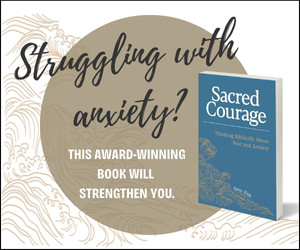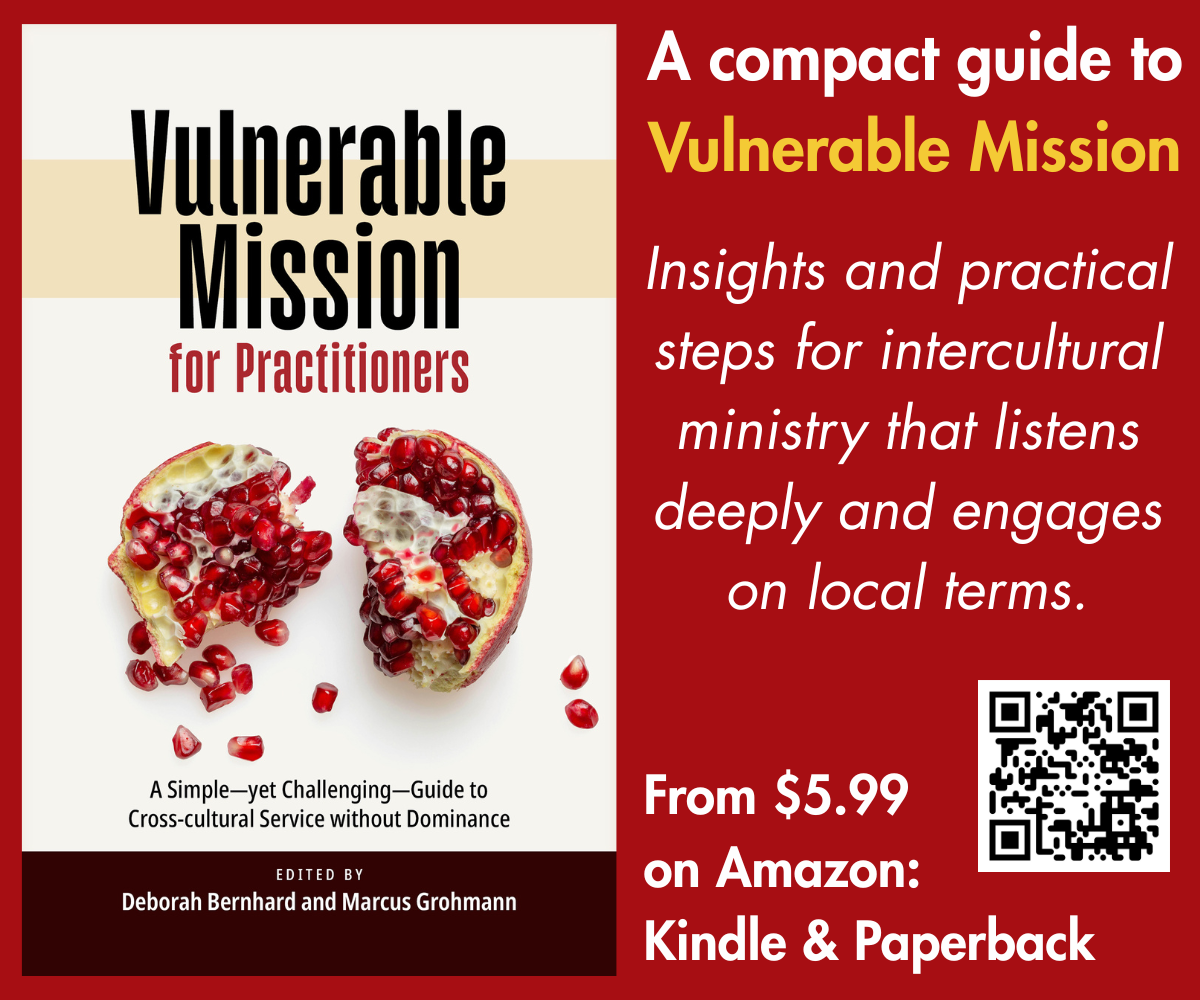EMQ » Jan – March 2025 » Volume 61 Issue 1

Outdoor Worship
Summary: Worshiping outdoors offers rich possibilities to deepen faith, care for creation, and transform spaces into sacred places. It has a long history starting in biblical times and continues through modern movements like Forest Church. Intentionally participating in outdoor worship provides a way for any Christian community worldwide to rediscover God’s first sanctuary and its profound impact on our spiritual lives.
By Abel Stewart
In spring of 2024, I shared my research on outdoor worship with a missionary colleague working in Zambia. He observed that many Zambian congregations are already worshipping outdoors, but they really want buildings for their congregations to gather. A few weeks later, I heard about two congregations in the Midwest US that needed to keep their buildings dark for most of the week because they couldn’t afford to pay the electric bill.
We’re at a unique crossroads in the global church. While many congregations in the Global South are longing for buildings, other congregations in the North are finding buildings to be more of a liability than an asset.
For economic, ecological, and theological reasons, over the last two decades, communities in the emerging Forest Church and Wild Church movements have begun to explore what it means to meet and worship in outdoor settings. With indoor gathering restrictions during the COVID-19 pandemic, even some mainstream congregations have begun to explore what outdoor worship is all about. What possibilities does outdoor worship offer to Christian communities, and what are the limitations?
Outdoor Spaces and Worship
Since biblical times, outdoor spaces have held an important role in the life and worship of God’s people. The outdoors can often be an important site of encountering God, wilderness retreat, a focused time of prayer, and/or recentering our faith.
Frequently, though, our faith practices have become centered around buildings. There are reasons for this. A church building sometimes functions as an axis mundi, a central location for a community that helps to orient the people’s cosmology.[i] This is not inherently bad, but taken to an extreme, sometimes a building can become an idol.
However, what would it mean to worship God without a building? If we set aside altar tables, pews, pulpits, sound systems, projection screens, choir lofts, lighting, organs, drum enclosures, narthexes, baptismal fonts, fellowship halls, classrooms, offices, roofs, walls, and floors, then what remains?
On a practical level, how might a Christian community fully do church without a building? Russell Richey offers three options for considering natural outdoor spaces as a site for Christian worship and discipleship: nature as cathedral, nature as prayer garden, and nature as wilderness.[ii]
Nature as Cathedral
This involves the organization of natural outdoor space to support community gatherings for worship. In the Methodist camp meetings of the US frontier, some camp meeting sites needed to accommodate as many as four thousand people and involved clearing the underbrush of several acres of land.[iii]
However, it’s also possible to consider a small outdoor chapel that accommodates a few dozen people. There are three common design factors. First, as much as possible, preserve natural features as an environment primarily built by God.
Second, consider seating, restrooms, accessibility, availability of potable water, and other site amenities that empower a community to gather and spend time there. Finally, consider what basic platforms, podium-like structures, altars, or other spatial features might help a community with the liturgical functions of doing worship in that location.
Early US frontier preachers often made use of rocks or tree stumps as podiums.[iv] For larger camp meetings, some frontier communities built tabernacles, semi-enclosed roofed platforms that visually framed the speaker and acoustically helped direct the sound of their voice toward the people.[v] Seating in an outdoor worship space can consist of rocks, felled logs, cinder blocks and boards, terraced landscape, or other basic options.
Whenever possible, keep it simple. As a guiding principle, build only what basic amenities are needed, but otherwise keep human construction to a minimum. This preserves the beauty and aesthetics of what God has already built in that natural site. Whenever possible, work with the natural environment instead of against it.
Nature as Prayer Garden
This involves creating a more private, intimate space. Landscape architects consider factors of prospect and refuge.[vi] In other words, how does the placement of features in an outdoor space contribute to inviting exploration and adventure (prospect) or inviting retreat and seclusion (refuge)?
By selectively planting or leaving bushes and shrubs in place, it’s possible to frame a more intimate space for individuals or small groups to gather for devotion or reflection. Particularly when these private spaces are adjacent to open spaces that invite exploration (think a semi-enclosed forest thicket next to an open meadow), the contrast helps accentuate the function of each space.
Community use of an outdoor prayer garden can involve quiet contemplation of the natural setting, individual or small group prayer, reading scripture, or other devotional practices. Yet be aware that in an outdoor prayer garden, the natural environment is always an inherent part of the process.
In his source book on the Forest Church movement, Bruce Stanley discusses the concept of a “sit spot” where a person can regularly cultivate awareness of what God has created in the natural world.[vii] Part of selecting or designing such a sit spot involves multi-level greenery (high tree canopy, mid-level bushes, and low level shrubs and grasses) encouraging habitat for diversity of wildlife in the space.
Nature as Wilderness
Nature-as-wilderness involves using natural spaces with minimum human intervention. Examples can include nature trails, wilderness hikes, simple camping, and other ways to remove ourselves from humanly-developed spaces.
A key part of this sort of wilderness experience is what Victor Turner identifies as liminal time and space, a ritual time and space removed from what is ordinary.[viii] Almost every leader in the Bible, both in the old and new Testaments, had a deeply formational time in the wilderness (Abraham, Isaac, Jacob, Moses, David, Elijah, Ezekiel, John the Baptist, Jesus, Paul, etc.), and frequently the wilderness is where God choses to enact covenant.
Nature Brings Sensory Richness
As suggested by Psalm 19:1–4, Job 12:7–10, and Romans 1:20, it is very likely that God providentially uses nature as a way of communicating to us. For example, natural spaces can bring a sensory richness, offering important cues to our perception of seasonal and diurnal time, as well as shaping our behavior and psychological condition through “odors, sounds, tastes, smells, haptic-sensations, and visual patterns that fluctuate with time (daily and seasonal) and weather.”[ix]
Insulating ourselves from nature can “unwittingly [reduce] the frequency of nature’s providential signs and communications.”[x] The reason becomes clearer when we realize how many significant cues we humans draw from weather, sunlight, temperature, season, and sensory rhythms in natural environments. While buildings do provide us with basic protection from the elements, they also frequently close us off from important experiences of God’s created world and from seasonal rhythms of life.
Recognizing this, the recent biophilic movement in architectural design seeks to integrate sensory experience of nature into building design. It incorporates natural light, water features, use of plants and plant-like textures, and other natural elements into daily-life spaces.[xi] One aspect of biophilic design is to integrate more benign aspects of nature,[xii] while protecting from dangerous or annoying aspects of nature (extreme weather, predatory wildlife, bugs, etc.).
Some Christian communities intentionally embrace all of nature, both benign and sometimes dangerous, by locating themselves entirely outside buildings for their worship and community gatherings. The primitivist movement in early US history sought to reclaim the value of worshipping outside.[xiii] This is echoed in the Forest Church and Wild Church movements today.
Forest Church congregations are primarily located in UK and Canada, and Wild Church congregations primarily in the US. These movements offer some very helpful primary source material[xiv] and ideas on how to develop various approaches to outdoor worship that can be adapted to other countries and contexts. Because the Forest Church communities are primarily in northern climates, many of their recommended outdoor activities and approaches to worship could easily be adapted to other settings in similar latitudes where there is a yearly cycle of seasonal extremes.
For contexts in the Global South, many of the activities can be adapted, but would correspond with differing seasons. Because weather and climate can vary widely by region, it is worthwhile to plan and account for localized factors, including monsoon rains, intense heat, seasonal pollen and allergies, dust storms, floods, frequent thunderstorms, intense wind, or other local weather phenomena. While the liminal vulnerability of worshipping outside has a value, safety and practicality related to weather are also important.
Contextualization Issues
The Forest and Wild Churches often place a strong value on not too-rigidly structuring worship. As with primitivist movements that circumvented the religious status quo by moving outside, these outdoor worship movements sometimes involve “edge walkers within the Christ tradition.” These are persons and communities who, at times, embrace doctrine and practices that are on the margins of Christian norms and/or orthodoxy.[xv]
One of the primary factors of critical contextualization[xvi] related to outdoor worship is what to do with special places outdoors, those sites that, whether because of natural features or momentous events that have happened there, are seen as sacred to communities. There is sometimes a fine line between valuing specific natural settings where we have deeply encountered the sacred and worshipping natural features that are personified or imbued with life by spirits.
And as with Paul Hiebert’s discussion of the “excluded middle,”[xvii] we sometimes lack theological or worldview frameworks to discuss spiritual, this-world-related realities without resorting to matter/spirit dualism. At times, churches have rejected natural environments outright as sites of worship and then grounded Christian worship indoors. However, that potentially can close us off from providential signs and communication from God, as we conduct worship in primarily humanly-constructed space. This calls for wisdom.
Some of the Forest and Wild Church communities draw some of their cultural practices from Pagan and Druidic traditions. While this can make some Christians uncomfortable, at times the points of friction are precisely those where Christian communities have resorted to dualism and avoided dealing with messy spiritual issues of the excluded middle.
I suggest that a more helpful approach to messy spiritual and contextual factors of outdoor worship is to embrace the complexities. In dialogue with robust scriptural study we can look carefully at the discernment of spirits (1 John 4:1–7), navigate spiritual complexities in communities (1 Corinthians 8), and remain guided by a standard of “perfect” love (that is, fulfilled, matured, brought to completion – telios in Greek) (Matthew 5:45–48) as directed by Jesus himself.
Guided by Scripture, we can lean into the contextual complexities rather than away from them. We can seek what most fully expresses mature Christian love, and what is ultimately most God-honoring.[xviii] These approaches would also apply in other cultural contexts where animism is practiced.
Valuing and Caring for Creation
A core value for many outdoor worshipping communities is creation care. How we view the natural world is usually strongly connected to our views of Christian eschatology and what we believe is the ultimate fate of this world. In other words, if we believe that this world is destined for destruction, it makes little sense to invest in caring for it.
In his book, Surprised by Hope, N.T. Wright offers a well-reasoned case that there may be more permanence to this natural world than is commonly understood in contemporary Christian thought.[xix] By extension, our care of creation is a good and appropriate action of living into God’s kingdom.
As Wright explains, “You are not oiling the wheels of a machine that’s about to roll over a cliff. You are not restoring a great painting that’s shortly going to be thrown on the fire. You are not planting roses in a garden that’s about to be dug up for a building site. You are … accomplishing something that will become in due course part of God’s new world.”[xx]
A key part of outdoor worship, then, is to value and care for the entirety of creation, showing love and respect toward the natural environment. This is a reasonable extension of Philippians 2, in which we are called to have “the same mind of Christ,” approaching others with the same humility and maturity that Jesus showed to us.
Doing worship in outdoor spaces requires us to set aside arrogance and to approach the non-human others in that natural environment (the various flora and fauna) with the same love and respect that Christ has shown to us. Care of the natural environment is an appropriate extension of God’s love, and a fuller expression of the missio Dei for the redemption of all creation.[xxi]
Transforming Space to Place
As a guiding framework to consider practical factors of outdoor Christian community, I refer to building and enacting the space. By building, I refer to any actions taken to prepare, organize, design, or modify the spaces that are used, in the sense of built environment. In an outdoor worship space, that could include removing or planting specific plants, sculpting landscape, adding benches or other structures, placing signage, clearing and mulching pathways, or other actions that help improve a space’s function for what a community does there.
By enacting,[xxii] I refer to meaningful actions that a community does in the space whenever they gather, including liturgical movements or readings, proclamation and hearing of Scripture, sacraments, singing, prayer, and so on. Together, these community actions of building and enacting comprise place-making – what a community does to transform space into meaningful place.[xxiii]
Worship in outdoor environments differs from indoor worship. There is a more direct awareness of what God has made. A more inclusive theological aesthetic exists due to fewer spatial boundaries. Vulnerability before God related to creature comforts increases. A sense of connection with the non-human communities around us (the flora and fauna) also goes up.
Outdoor worship changes our awareness of our place in this world. When done well, it makes us more humble, more teachable, and more aware of our need for God’s providence and sustaining grace.
God has created an amazing diversity of landscapes, climates, seasons, flora, and fauna in every part of the globe. When we worship outside, we discover anew God’s creativity, and our communities’ worship experiences are richer for it.

Abel Stewart (abels@nhumc.org) is an ordained deacon in the United Methodist Church, and he works administering an urban ministry center in San Antonio, Texas for Northern Hills UMC. He is presently doing his dissertation work on place-making in outdoor worship, toward a PhD in world arts at Dallas International University.
[i] Mircea Eliade, Patterns in Comparative Religion (London: Sheed & Ward, 1958).
[ii] Russel Richey, Methodism in the American Forest (Oxford: Oxford University Press, 2015), 17.
[iii] Richey, Methodism in the American Forest, 61.
[iv] Brett Grainger, Church in the Wild: Evangelicals in Antebellum America (Cambridge, MA: Harvard University Press, 2019), 40.
[v] For a visual example of these tabernacle structures, see the front cover of Richey, Methodism in the American Forest or Kenneth Kinghorn, The Heritage of American Methodism, 2nd ed. (Lexington, Kentucky: Emeth Press, 2009), 155.
[vi] For more on “prospect” and “refuge” in landscape design, see Stephen Kellert, “Dimensions, Elements, and Attributes of Biophilic Design,” in Biophilic Design: The Theory, Science, and Practice of Bringing Buildings to Life, ed. Stephen Kellert, Judith Heerwagen, and Martin Mador (Hoboken, NJ: John Wiley & Sons, 2008), 13; Judith Heerwagen and Bert Gregory, “Biophilia and Sensory Aesthetics,” in Biophilic Design, ed. Kellert, Heerwagen, and Mador; Grant Hildebrand, The Origins of Architectural Pleasure (Berkeley: University of California Press, 2000); and Jay Appleton, The Experience of Landscape (London: John Wiley & Sons, 1975).
[vii] Bruce Stanley, Forest Church: A Field Guide to a Spiritual Connection with Nature, 1st edition (Anamchara Books, 2013), 65.
[viii] Victor Turner, The Ritual Process: Structure and Anti-Structure, First paperback edition (Ithaca, N.Y: Cornell University Press, 1977).
[ix] Heerwagen and Gregory, “Biophilia and Sensory Aesthetics,” 229–30.
[x] Grainger, Church in the Wild, 59.
[xi] Stephen Kellert, Judith Heerwagen, and Martin Mador, eds., Biophilic Design: The Theory, Science, and Practice of Bringing Buildings to Life (Hoboken, NJ: John Wiley & Sons, 2008).
[xii] Terry Hartig, Tina Bringslimark, and Grete Grindal Patil, “Restorative Environmental Design: What, When, Where, and for Whom?” in Biophilic Design, ed. Kellert, Heerwagen, and Mador, 139.
[xiii] Grainger, Church in the Wild, 28.
[xiv] Stanley, Forest Church; Victoria Loorz, Church of the Wild: How Nature Invites Us into the Sacred (Minneapolis, Minnesota: Broadleaf Books, 2021).
[xv] Loorz, Church of the Wild, 196.
[xvi] Paul Hiebert, R. Daniel Shaw, and Tite Tiénou, “Responding to Split-Level Christianity and Folk Religion,” International Journal of Frontier Missions 16, no. 4 (2000): 173–82.
[xvii] Paul Hiebert, “The Flaw of the Excluded Middle,” Missiology 10, no. 1 (1982): 35–47.
[xviii] For a fuller, “unified kingdom” framework of understanding God-honoring community practices in built environment, see Eric Jacobsen, The Space Between: A Christian Engagement with the Built Environment (Grand Rapids, MI: Baker Academic, 2012), 21.
[xix] N.T. Wright, Surprised by Hope: Rethinking Heaven, the Resurrection, and the Mission of the Church (New York: HarperOne, 2008).
[xx] Wright, Surprised by Hope, 208
[xxi] See David J. Bosch, Transforming Mission: Paradigm Shifts in Theology of Mission, Twentieth anniversary ed., American Society of Missiology Series (Maryknoll, N.Y.: Orbis Books, 2011); and Michael W. Goheen, Introducing Christian Mission Today: Scripture, History, and Issues, 1 edition (Downers Grove, Illinois: IVP Academic, 2014), 36-41.
[xxii] For a fuller understanding of the concept of “enacted” space, see Jacobsen, The Space Between, 17-18; and James Thomas Rojas, “The Enacted Environment: The Creation of ‘Place’ by Mexicans and Mexican Americans in East Los Angeles” (MA thesis, Massachusetts Institute of Technology, 1991).
[xxiii] For more on place, place making, and place attachment, see Jacobsen, The Space Between; William McAlpine, Sacred Space for the Missional Church: Engaging Culture through the Built Environment (Eugene, OR: Wipf & Stock, 2011); Philip Helsel, “Loving the World: Place Attachment and Environment in Pastoral Theology,” Journal of Pastoral Theology 28, no. 1 (2018): 22–33; and Jennifer Craft, Place Making and the Arts: Cultivating the Christian Life (Downers Grove, IL: IVP Academic, 2018).
EMQ, Volume 61, Issue 1. Copyright © 2025 by Missio Nexus. All rights reserved. Not to be reproduced or copied in any form without written permission from Missio Nexus. Email: EMQ@MissioNexus.org.







One of the most impactful worship services that I participated in was outdoors in Africa! It reminded me of the beauty of worshipping in God’s creation just as the first worshipers would have enjoyed when communing with God in Eden.